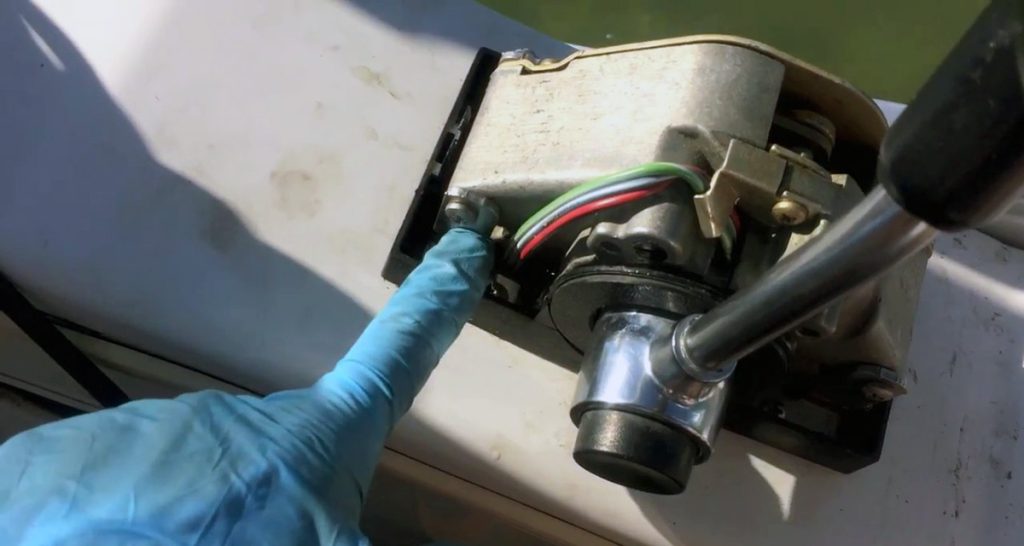Outboard motors are essential components of boats, providing propulsion and control on the water. To maneuver efficiently, outboard motors rely on gear shifting cables and steering cables.
In this article, we will delve into the inner workings of these cables and explore how they enable seamless gear shifting and precise steering in outboard motors.
Gear Shifting Cables:
Gear shifting cables are responsible for transmitting the driver's input from the control lever to the transmission system within the outboard motor. They allow the operator to shift between various gears, such as forward, neutral, and reverse, to control the boat's speed and direction. Let's break down the process:
Control Lever: The control lever is the interface between the operator and the outboard motor. It is typically located on the boat's helm and is connected to the gear shifting cables.
Cable Connections: The gear shifting cables are connected to the control lever at one end and to the transmission system at the other end. The cables are usually made of durable materials, such as stainless steel or synthetic fibers, to withstand the harsh marine environment.
Cable Routing: Gear shifting cables are routed through the boat's structure, often within protective sleeves or conduit, to prevent chafing and ensure smooth operation. It is crucial to maintain proper cable tension and avoid sharp bends or kinks that could impede movement.
Transmission System: At the outboard motor, the gear shifting cables connect to the transmission assembly. The cables interface with a shifting mechanism, which engages different gears as commanded by the operator.
Shifting Process: When the operator moves the control lever, the corresponding cable transmits that input to the transmission system. The transmission's shifting mechanism responds by engaging the desired gear, adjusting the engine's power output to propel the boat in the desired direction.
Steering Cables:
Steering cables play a pivotal role in controlling the direction of the boat. They allow the operator to turn the outboard motor and steer the vessel accurately. Here's a closer look at the steering cable system:
Steering Wheel: The steering wheel is the primary control interface for the operator. It is connected to the steering cables and provides the means for steering the boat.
Cable Connections: Steering cables are connected to the steering wheel at one end and to the outboard motor's steering mechanism at the other end. As with gear shifting cables, steering cables are also constructed from robust materials to withstand the marine environment.
Cable Routing: Steering cables are routed through the boat's structure, following a similar path as the gear shifting cables. They are secured properly to ensure smooth movement without any hindrance.
Steering Mechanism: The steering cables attach to the outboard motor's steering mechanism, which controls the direction of the motor. The mechanism usually consists of a series of gears and linkages that translate the movement of the cables into a rotational motion, turning the motor's outboard unit.
Steering the Boat: When the operator turns the steering wheel, it imparts a corresponding rotation to the steering cables. This rotational movement is transmitted to the outboard motor's steering mechanism, which in turn alters the direction of the motor, causing the boat to change course.
Maintenance and Care:
To ensure the proper functioning and longevity of gear shifting cables and steering cables, regular maintenance and care are essential. Here are some key maintenance tips:
Inspection: Regularly inspect the cables for any signs of wear, corrosion, or damage. Pay attention to cable ends, connections, and the routing path.
Lubrication: Apply appropriate marine-grade lubricants to the cables and their connections to minimize friction and ensure smooth operation.
Tension Adjustment: Periodically check and adjust cable tension according to the manufacturer's guidelines. Proper tension prevents excessive slack or tightness that can impact performance.
Protection: Routinely check protective sleeves or conduit for signs of wear or damage. Replace or repair them as needed to safeguard the cables from environmental factors.
Wrapping Up
Gear shifting cables and steering cables are integral components of outboard motors, enabling precise control over speed and direction. Understanding how these cables work provides boaters with a deeper insight into their vessel's mechanical operations. By maintaining these cables and conducting regular inspections, boat operators can enjoy smooth gear shifting and responsive steering, ensuring a safe and enjoyable experience on the water.


